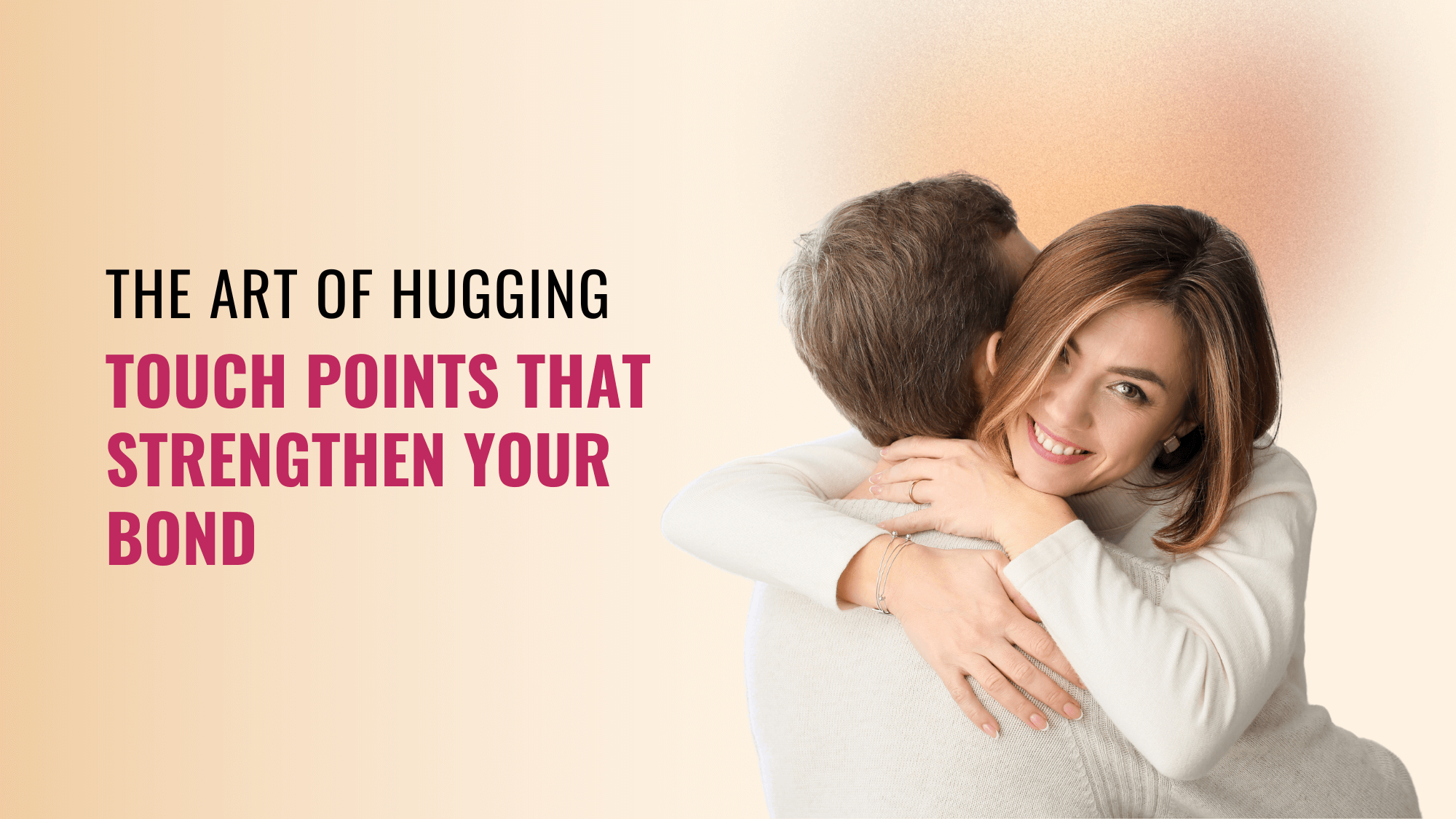Where to Touch a Guy While Hugging: A Complete Guide
Introduction
We’ve all been there – that moment when you’re about to hug someone, and you’re not quite sure where to place your hands. Hugging might seem simple, but there’s actually an art to it, especially when hugging someone of the opposite gender. Today, we’re diving deep into the world of hugging etiquette, specifically focusing on where to touch a guy while hugging. Whether it’s your boyfriend, a friend, or a family member, understanding appropriate touch points can make the difference between a comfortable embrace and an awkward moment.
Understanding the Importance of Physical Touch
Physical touch is one of the most fundamental human needs. It’s how we communicate comfort, affection, and support without saying a word. When it comes to hugging guys, it’s essential to recognize that men, just like women, appreciate meaningful physical contact. However, the approach might need to be different depending on your relationship and the situation.
Different Types of Hugs
Before we dive into specific touch points, let’s explore different types of hugs you might encounter:
- The Friendly Hug
This is your standard, everyday hug between friends or acquaintances. It’s usually quick, light, and involves minimal body contact. - The Romantic Hug
More intimate and longer-lasting, this type of hug is reserved for romantic partners and involves closer body contact. - The Comforting Hug
When someone needs emotional support, this hug tends to be gentle and protective. - The Side Hug
A casual, less intimate option that’s perfect for professional or casual acquaintances.
Appropriate Touch Points During a Hug
Upper Back and Shoulders
The safest and most universally acceptable place to touch a guy while hugging is the upper back and shoulders. This area is neutral territory and appropriate for most types of hugs. Place your hands flat against his upper back, between his shoulder blades. This position communicates warmth without being too intimate.
Arms and Mid-Back
For a friendly or casual hug, placing your hands on his arms or mid-back is perfectly appropriate. This creates a comfortable distance while still maintaining a connection. You can gently pat or rub this area during the hug, depending on your relationship.
Lower Back
The lower back is generally reserved for more intimate relationships. If you’re hugging your romantic partner, placing your hands on his lower back can create a closer connection. However, avoid this area when hugging friends or acquaintances.
Neck and Head
Touching the neck or head area during a hug is typically reserved for very close relationships. If you’re comforting someone or sharing an intimate moment with a romantic partner, gently cradling the back of their head can be very soothing.
Reading Body Language
Understanding body language is crucial for appropriate hugging. Here are some signs to watch for:
Positive Signs:
- Leaning in toward you
- Open arms and relaxed posture
- Maintaining the hug for a few seconds
- Gentle patting or rubbing of your back
Signs of Discomfort:
- Stiff posture
- Quick release
- Minimal body contact
- Leaning away
- Crossed arms before the hug
Cultural Considerations
It’s important to remember that hugging customs vary significantly across cultures. Some key points to consider:
Western Cultures:
- Generally more accepting of casual hugging
- Common between friends and family
- Often used as a greeting
Asian Cultures:
- May prefer bowing or other non-contact greetings
- Hugging might be reserved for family or close friends
- More conservative approach to physical contact
Middle Eastern Cultures:
- Often have strict rules about physical contact between genders
- May prefer same-gender hugging only
- Important to be aware of religious considerations
Building Emotional Connection Through Hugging
A good hug can strengthen emotional bonds and create deeper connections. Here’s how to make your hugs more meaningful:
- Be Present
Focus on the moment and the person you’re hugging. Don’t rush through it or get distracted. - Show Genuine Care
Let your embrace communicate your feelings of care and affection appropriately. - Respect Boundaries
Always be mindful of the other person’s comfort level and personal space. - Match Their Energy
Mirror the intensity and duration of their hug to ensure both parties are comfortable.
Common Mistakes to Avoid
- Hugging Too Tight
While enthusiasm is great, squeezing too hard can be uncomfortable or even painful. - Inappropriate Touch Points
Avoid touching areas that might make the other person uncomfortable or send the wrong message. - Forcing a Hug
Always respect when someone doesn’t want to hug or prefers other forms of greeting. - Making it Awkward
Don’t overthink it – natural, genuine hugs are always best.
When to Avoid Hugging
There are times when hugging might not be appropriate:
- Professional settings (unless it’s a very casual workplace)
- When someone is clearly uncomfortable
- First meetings (unless initiated by the other person)
- Cultural or religious restrictions
- During illness or when physical contact should be limited
The Psychology Behind Hugging
Understanding why hugging affects us can help make our embraces more meaningful:
- Releases oxytocin (the “bonding hormone”)
- Reduces stress and anxiety
- Builds trust and connection
- Improves emotional well-being
Tips for Perfect Hugging
- Maintain Good Hygiene
Nobody wants to hug someone who hasn’t taken care of their personal hygiene. - Read the Room
Be aware of the social context and whether a hug is appropriate. - Start with Body Language
Look for signs that the other person is open to a hug. - Keep it Natural
Don’t overthink it – genuine affection usually comes naturally.
Special Considerations for Different Relationships
Family Members:
- Usually more relaxed and natural
- Can be more protective and nurturing
- Often longer duration is acceptable
Friends:
- Quick and casual
- Usually accompanied by verbal greetings
- May include pat on the back
Romantic Partners:
- More intimate and prolonged
- Can include additional touches like kissing
- Often involves full body contact
The Impact of Personal Space
Everyone has different comfort levels with personal space. Factors to consider:
- Individual preferences
- Past experiences
- Cultural background
- Current emotional state
Making Hugs More Meaningful
To make your hugs more impactful:
- Make eye contact before and after
- Smile genuinely
- Add a kind word or greeting
- Be mindful of the moment
FAQs
Q: How long should a hug last?
A: The duration depends on the relationship and context. A friendly hug typically lasts 2-3 seconds, while romantic or comforting hugs can last longer.
Q: What if I’m not sure if someone wants a hug?
A: When in doubt, ask! It’s better to verbally check than to make someone uncomfortable.
Q: Where should I look while hugging?
A: It’s natural to close your eyes or look over the person’s shoulder. Avoid staring directly at them during the hug.
Q: Is it okay to pat someone’s back while hugging?
A: Yes, gentle patting can be appropriate, especially during friendly hugs.
Q: What if someone hugs me and I’m not comfortable?
A: It’s okay to politely decline or step back. You can also offer an alternative greeting like a handshake.
Q: Should I hug differently depending on height differences?
A: Yes, adjust your arm position based on height. Taller people might need to bend slightly, while shorter people might need to reach up.
Q: What’s the best way to end a hug?
A: Gently release your grip and step back. Avoid abrupt movements or pushing away.
Q: Is it okay to hug someone from behind?
A: This type of hug should only be shared with very close friends or romantic partners who are comfortable with it.
Conclusion
Hugging is a beautiful way to express cared connection with others. By understanding appropriate touch points and reading body language, you can make your hugs more meaningful and comfortable for everyone involved. Remember that personal boundaries vary, and it’s always better to err on the side of respect and consideration. Whether you’re hugging a friend, family member, or romantic partner, the key is to be genuine, mindful, and respectful of the other person’s comfort level.
Remember, the best hugs are those that come naturally and from a place of genuine care and affection. Don’t overthink it – just be present in the moment and let your authentic feelings guide you while respecting appropriate boundaries.




